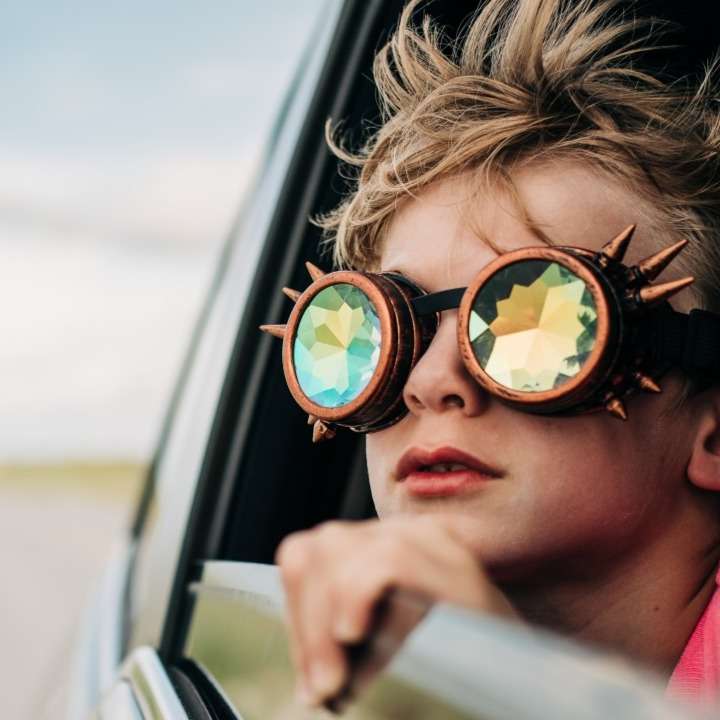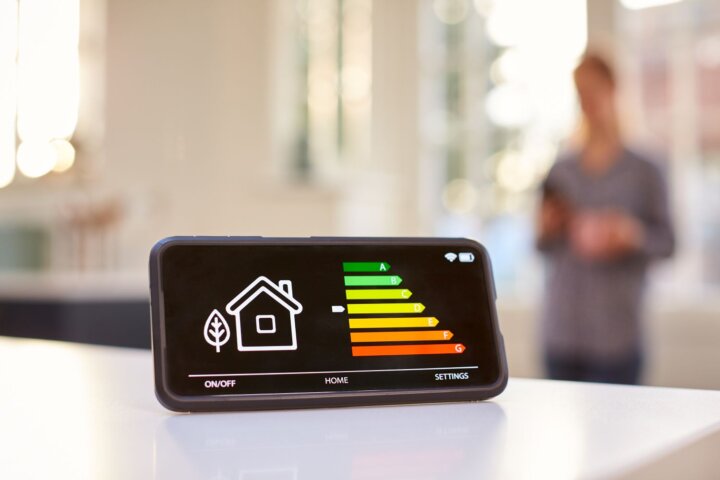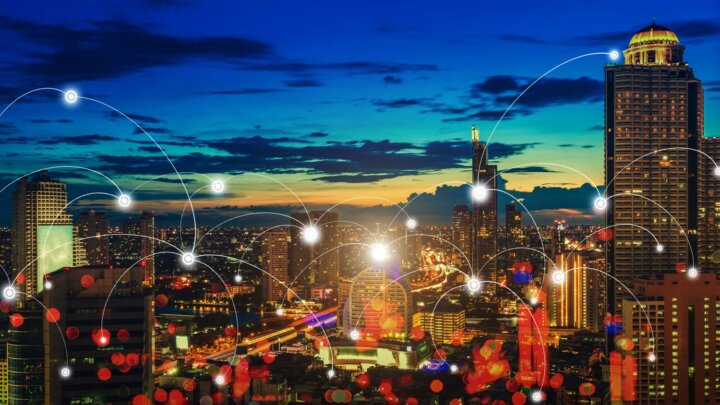What is safe and healthy for our eyes?
Spending so much time indoors, we come to appreciate time outdoors when we can gaze into the beautiful blue sky. Is this hazardous to our eyes? Although the amount of light in the blue wavelengths is very high, the light is scattered in all directions. The intensity of natural light is moderate and we normally wouldn’t stare for hours, so looking up at the blue sky is not hazardous. However, staring directly at the sun, even briefly, is damaging to our eyes. The direct sunlight is rich with high energy visible blue and UV wavelengths, and the intensity is very high.
We introduce the question of what is safe and healthy for our eyes with the mention of specific portions of the light spectrum: Ultraviolet, or UV, and High Energy Visible light, or HEV. UV is not visible, so light in the UV wavelengths is sometimes referred to as UV radiation. HEV light covers the shortest wavelengths that are visible to us, about 400 to 500 nanometers (nm). Some experts define HEV as 380 – 450 nm (1). This is the violet to blue part of the visible spectrum, so ‘HEV’ is often taken to mean blue light. UV is more energetic than HEV light, and therefore is the most damaging. However, long term exposure to HEV light has come under scrutiny (2) so it is useful to examine why this is so.
How can light damage our eyes?
There are two mechanisms by which our eyes can be damaged by light (3). The first is called retinal thermal damage. As it sounds, this is damage to the retina by heating. Any light source, if it is very intense, poses a risk of this type of damage. The more intense the light level, the faster thermal damage can occur. We will naturally turn away from powerful light sources to shield our eyes and prevent this type of damage. In some special cases, such as with medical lasers using infrared spectrum light, we must be warned of the hazard because we won’t perceive it through our vision.
The second damage mechanism is photoretinitis, often called ‘Blue Light Hazard’. The highest energy visible light is the violet and blue light in the range of 380 to 450 nm. This HEV light can break down photopigments in the retina into free radicals. Those free radicals can damage retinal cells and lead to cell death (depending on intensity and duration). Since the damage mechanism is based on creation of oxidizing free radicals, the eye’s antioxidant status becomes an important factor in maintaining good eye health.
How to maintain good eye health
Without getting too technical, how do we assess the relative risks of lighting sources? And what measures should we take to maintain healthy vision? The US DOE presented a detailed assessment of Spectral Power Distribution (SPD). SPD is how we quantify the percentages of different portions of the visible spectrum which combine to create the ‘white’ light of a given light source (4). Dr. Royer explains that the color temperature, or CCT, of a light source gives us an approximate measure of the percentage of HEV blue light. The higher the CCT, the more blue light in the spectrum. For example, a ‘warm white’ LED light of 2700 or 3000K color temperature will have about 17 to 25% blue light. As we increase the CCT, the amount of blue light also increases. At 5000K the range is 34 – 39% blue light. As we would expect, 4000K LEDs are in between, having 27 – 32% blue light.
For comparison, two 4000K Metal Halide bulbs were tested, and these had 33 and 35% blue light. A 4000K fluorescent tube was tested and it fell right in the middle of the LED range at 30%. Even moonlight can have a substantial percentage of blue light – up to 29%. Mercury vapor lights posted one of the highest percentages of blue light: 36%. Among Dr. Royer’s conclusions (quoting):
- LEDs offer unprecedented ability for spectral engineering.
- LED is not a homogenous technology!
- LEDs do not pose an unusual hazard for any undesirable consequence of lighting. (4)
Is blue light bad for your eyes?
We decided to test our TV screen and a computer monitor to compare the spectral power distribution to LED lights. As expected, the SPD varied according to the colors of the images on the screen. The range of CCT was very high: 7000 to as high as 11000K. This means a very high percentage of blue light. Our TV is a much greater hazard than our lighting.
We also tested the effectiveness of the “Night” setting on the computer display, measuring the SPD at 25%, 50%, 75% and 85%. It proved very effective but a setting above 75% was necessary to make a meaningful reduction in blue light content.
Not all blue light is bad
It’s important to recognize that, in addition to the high levels of blue light found in computer displays and TVs, we are also staring directly into these screens for extended periods. The same is true for our cell phones and tablets. The relative hazard of these digital devices is much higher than for general lighting. Not all blue light is bad. On the contrary, exposure to blue light during the daytime hours is necessary to maintain our circadian rhythm associated with nighttime melatonin production. Dr. Gary Heiting adds:
“…It’s well documented that some blue light exposure is essential for good health. Research has shown that high-energy visible light boosts alertness, helps memory and cognitive function, and elevates mood.
In fact, something called light therapy is used to treat seasonal affective disorder (SAD) — a type of depression that’s related to changes in seasons, with symptoms usually beginning in the fall and continuing through winter.
The light sources for this therapy emit bright white light that contains a significant amount of HEV blue light rays.” (2)
Protecting our eyes
As with so many aspects of our health, we find that HEV blue light is beneficial, and even necessary, but in excess it can damage our eyes. If we are reckless we even risk permanent loss of sight. Today we have many ways to protect our eyes. Things like filters that clip onto our digital device screens, adjustable settings that we can control according to the time of day, and blue-blocking eyewear. We can also protect ourselves from the inside by optimizing our nutrition.
The American Academy of Ophthalmology has published a guide, ”36 Fabulous Foods to Boost Eye Health” (5). In today’s fast-paced world, we won’t always have time to cook, so it is also possible to use supplements to help maintain our eye’s antioxidant defenses (6). One of the intriguing aspects of using nutrition to protect our eyes is that some of the same nutrients critical for our vision have been found to substantially lower our risk of developing Alzheimer dementia (AD) (7).
In addition to the nutrients mentioned in (5) and (6), the amino acid Taurine is found in high amounts in mammalian eyes and is the most abundant amino acid found in the retina. The essential role for Taurine has been documented in cases where Taurine depletion resulted in severe retinal damage in the photoreceptor layer (8). In these cases, taurine depletion was induced either by certain prescription drugs or by dietary restriction.
11 Tips for an Eye-Healthy Environment
Our eyes are precious. The following is a summary of our recommendations for an eye-healthy environment:
- Enjoy the outdoors and natural sunlight as much as you can but do use eyewear that filters out UVA/UVB light.
- Never stare at sources of UV light without eye protection specific to the hazard: the sun, UV sterilization lamps, metal arc welding.
- Computer and digital device time should be limited for Infants and young children as their eyes are more sensitive. Protect them from looking directly at high CCT light fixtures.
- If you have two monitors for your computer, turn the second one off when you’re not actively using it for your work. You’ll save energy and you’ll avoid an unnecessary exposure to high energy visible light.
- Use your computer’s “night setting” to reduce blue light from the display after 6 pm. You may have to adjust the setting to 80% or higher to get the full benefit of blue light reduction. The images on your display will have an amber cast, but your eyes will thank you!
- If your eyes are very sensitive, or if there is blue light exposure that can’t be easily prevented, get a blue light filter or ‘Blue Blocking’ glasses. These come in many styles, including clip-ons for your prescription glasses, but do your research because not all products on the market are effective.
- Avoid long periods of cell phone use, computer games and TV as these expose you to much greater levels of blue light than you typically receive from lighting, and you are continuously staring directly into the source of the blue light.
- For your home, or wherever you spend your evening time, warmer color temperatures (2700 or 3000K CCT) are best. If you have ‘cool white’ lighting (5000K or higher), use dimming, if possible, to reduce the level of light. LED fixtures are often equipped with electronic drivers capable of dimming but get expert help to match the type of dimming control to your specific fixtures as not all are compatible.
- Exposure to typical lighting levels of blue light during the daytime hours is actually beneficial for maintaining the body’s circadian rhythm. Blue light makes us alert, energized, and suppresses melatonin production which is natural during the daylight hours.
- Cheap LED lights may have flicker which can result in eye strain and headaches. If the flicker is at a frequency of 120 HZ, you won’t be able to perceive it but the constant fluctuation in light may still have a physiological effect. Big Shine LED fixtures are rated according to the IEEE 1789-2015.
- Pay attention to your nutrition; good eye health depends critically on good nutritional status. For those of us eating the typical American diet, supplements are necessary to adequately nourish our eyes. You’ll reap additional health benefits from doing so!
References
1. Markus Isser et al., High-energy visible light transparency and ultraviolet ray transmission of metallized rescue sheets; https://www.ncbi.nlm.nih.gov/pmc/articles/PMC6671957/
2. Gary Heiting, OD; Blue light facts: How blue light affects your eyes https://www.allaboutvision.com/cvs/blue-light.htm
3. Details on photobiological safety of LED light sources; Application Note No. AN002; Osram Opto Semiconductors; www.osram-os.com
4. Dr. Michael Royer; Spectral Power Distribution, The Building Block of Applied Lighting; PNNL, November 16, 2016. https://www.energy.gov/sites/prod/files/2016/11/f34/royer_spectral-power-dist_denver2016.pdf
5. https://www.aao.org/eye-health/tips-prevention/fabulous-foods-your-eyes
6. MacNeil, Jason; “Protect Eyes from Screen-Time Damage”, Life Extension; December 2019; LifeExtension.com
7. Changzheng Yuan, Hui Chen et al; Dietary carotenoids related to risk of incident Alzheimer dementia (AD) and brain AD neuropathology: a community-based cohort of older adults; Am J Clin Nutr. 2020 Nov 12 https://dgjc.docguide.com/dietary-carotenoids-related-risk-incident-alzheimer-dementia-ad-and-brain-ad-neuropathology?overlay=3&nl_ref=newsletter&pk_campaign=newsletter&nl_eventid=152785&nl_campaignid=17838&MemberID=301357119
Above blog article prepared by August Kruesi, 1.5.2021 ©2021 Big Shine Energy








